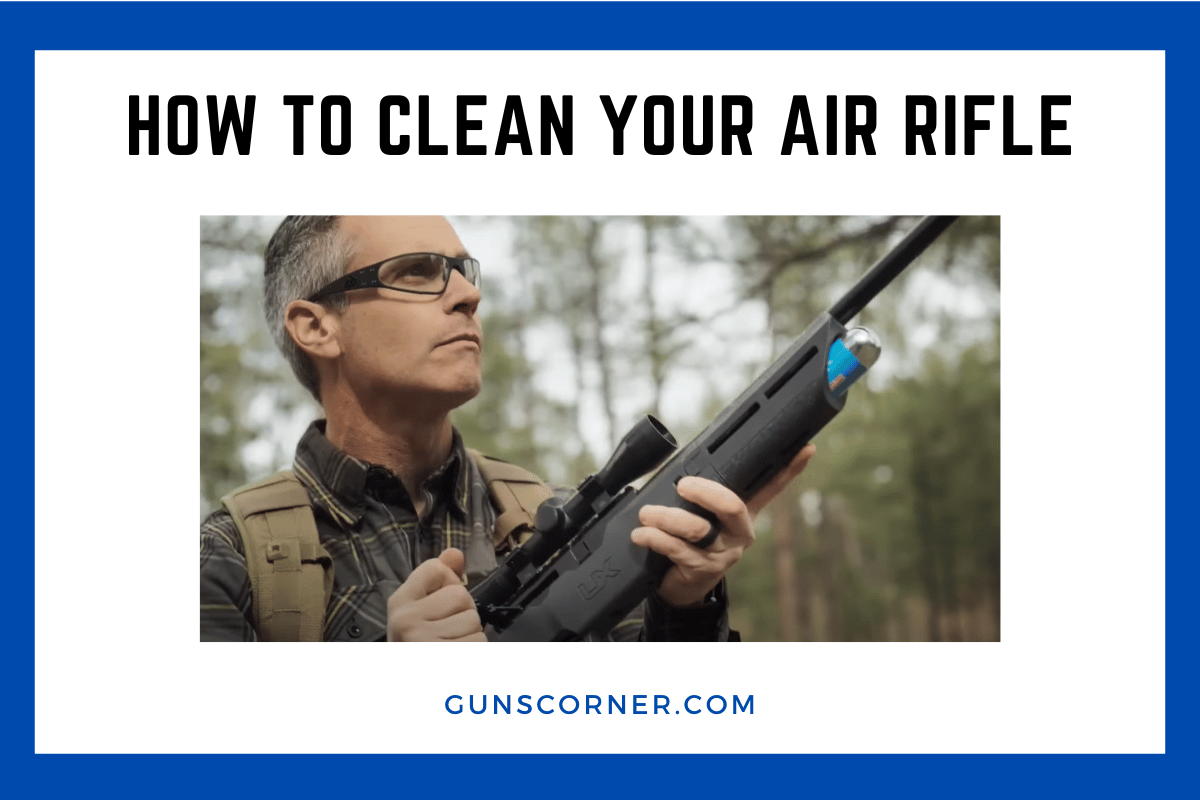Keeping your air rifle clean is key to its performance and longevity. A well-maintained air rifle shoots more accurately and lasts longer.
Regular cleaning removes dirt, debris, and residue that can affect accuracy and damage the gun over time.
Cleaning an air rifle isn’t hard, but it needs care and attention. You’ll need some basic tools and supplies.
A brass, bronze, or nylon brush is useful for scrubbing the barrel. A soft cloth and mild detergent work well for other parts.
The process involves taking apart the gun, cleaning each part, and putting it back together. It’s important to dry all parts thoroughly to prevent rust. Applying a thin layer of gun oil helps protect metal parts from moisture and corrosion.
Preparing for Cleaning
Before cleaning your air rifle, it’s crucial to prioritize safety and gather the right supplies. These steps ensure a smooth and effective cleaning process.
Safety Considerations
Always treat your air rifle as if it’s loaded. Make sure it’s unloaded and the safety is on before starting. Point the barrel in a safe direction at all times.
Wear safety glasses to protect your eyes from cleaning solvents and debris. Work in a well-ventilated area to avoid inhaling fumes from cleaning products.
Keep cleaning supplies away from food and drink. Some products can be toxic if ingested. Store them out of reach of children and pets.
Gathering Supplies
Invest in a good quality cleaning kit for your air rifle. This should include:
- Cleaning rod
- Bore brush
- Cleaning patches
- Cleaning solvent
- Lubricating oil
Choose brushes made of nylon, brass, or bronze. Nylon is gentler, while brass and bronze can tackle tougher buildup.
Other helpful items:
- Soft cloths
- Cotton swabs
- Compressed air
- Small brush (like a toothbrush)
- Mild soap solution
Having these supplies ready will make the cleaning process more efficient and thorough.
Disassembly Process
Taking apart your air rifle is a key step in cleaning. This process involves removing the air cylinder and separating the barrel from the action. Be careful and follow the steps closely.
Removing the Air Cylinder
Start by making sure your air rifle is unloaded. Point it in a safe direction and release any remaining air.
Find the air cylinder at the front of the rifle. Most models have a screw-on design. Turn the cylinder counter-clockwise to unscrew it from the main body.
Be gentle to avoid damaging the threads. If it’s tight, use a soft cloth for better grip. Once loose, carefully pull the cylinder straight out. Set it aside on a clean surface. Check the O-rings for wear and replace if needed.
Separating the Barrel and Action
Next, focus on the barrel and action. Look for screws holding these parts together. Use the right size screwdriver to avoid stripping them.
Remove the screws one by one, keeping them in a safe place.
Gently pull the barrel away from the action. Some models may need extra steps. Check your rifle’s manual for specific instructions. Be careful not to bend or damage any parts. Place the separated pieces on a clean cloth. This makes it easy to clean each part thoroughly.
Cleaning Techniques
Proper cleaning techniques are crucial for maintaining your air rifle’s performance and longevity. Regular care prevents buildup and ensures smooth operation.
Barrel Maintenance
Cleaning the barrel is essential for accuracy. Use a cleaning rod with a bore brush attached. Choose a brush made of nylon, brass, or bronze.
Push the brush through the barrel from breech to muzzle. Repeat this process 10-15 times.
Next, use a patch holder with a clean cloth patch. Run it through the barrel to remove loosened debris.
For stubborn residue, apply a small amount of gun solvent to a patch. Run it through the barrel, then follow with dry patches until they come out clean.
Finish by running an oiled patch through the barrel to prevent rust.
Cleaning the Action
The action needs regular cleaning to function smoothly. Remove the action from the stock if possible.
Use a soft brush to remove dirt and debris from all accessible parts. Pay extra attention to the trigger assembly and cocking mechanism.
Wipe down metal surfaces with a cloth slightly dampened with gun oil. Be careful not to oversaturate.
For hard-to-reach areas, use compressed air to blow out dust and particles.
Apply a small amount of gun grease to moving parts like the cocking lever and trigger assembly. Use sparingly to avoid attracting dirt.
Air Cylinder and Valve Care
The air cylinder and valve system require special care. Inspect O-rings and seals for wear or damage. Replace if necessary.
Keep the fill probe clean and lightly oiled. This helps maintain a good seal when filling the cylinder.
Wipe down the exterior of the air cylinder with a clean, dry cloth after each use. This removes moisture that could lead to corrosion.
Check the pressure gauge regularly for accuracy. A faulty gauge can lead to under or over-filling.
Never use solvents or harsh chemicals on the air cylinder or valves. These can damage seals and compromise safety.
Reassembly and Storage
After cleaning your air rifle, proper reassembly and storage are crucial. These steps ensure your gun stays in good condition and remains safe between uses.
Reassembling the Rifle
Put the rifle back together carefully. Follow the manufacturer’s instructions closely. Make sure all parts fit snugly and securely.
Check that screws are tight but not over-tightened. This prevents damage to the gun. Clean and lubricate moving parts as needed.
Test the gun’s functions after reassembly. Make sure the safety, trigger, and barrel move smoothly. If anything feels off, double-check your work.
Proper Storage Practices
Store your air rifle in a cool, dry place. High humidity can cause rust and damage.
If possible, use a gun safe or lockable cabinet. This keeps the rifle away from children and unauthorized users.
Before storage, apply rust preventative to the barrel’s exterior. This protects the metal from corrosion.
Store the rifle unloaded with the safety on. Keep ammunition separate from the gun.
To protect the rifle from dust and scratches, use a soft gun case or sleeve. Avoid storing in hard cases long-term, as they can trap moisture.
Check on your stored rifle periodically. This helps catch any developing issues early.

